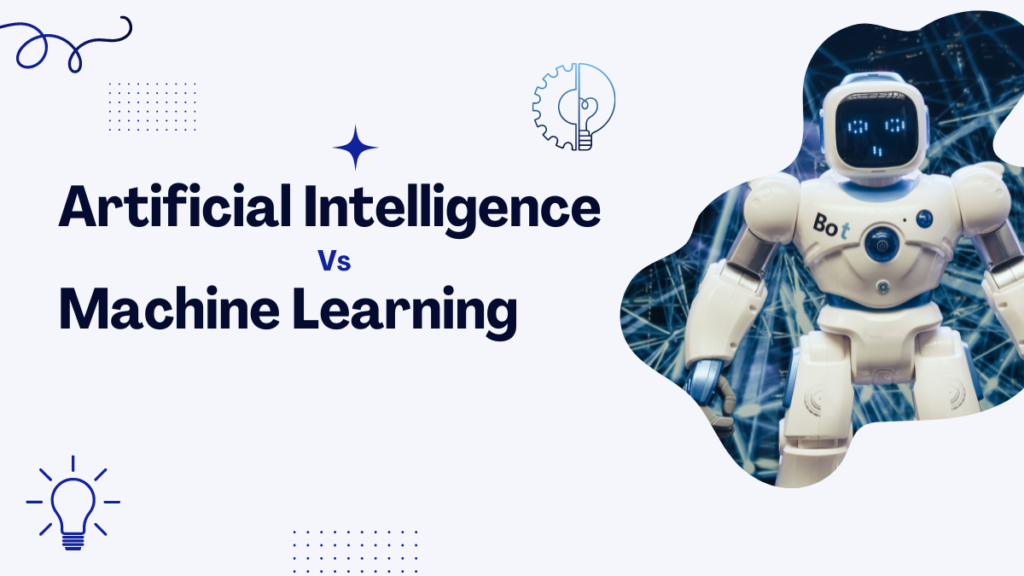In this article, we will elucidate the distinctions between Artificial Intelligence (AI) and Machine Learning (ML) and underscore their significance.
Artificial Intelligence, commonly abbreviated as AI, constitutes a realm within computer science dedicated to the creation of intelligent machines. It encompasses programs designed to emulate human thought processes and behaviors.
On the other hand, Machine Learning (ML), also known as Data Mining, represents a subset of AI that employs algorithms to glean insights from data without the need for explicit programming.
We will further delve into the juxtaposition of artificial intelligence versus machine learning, highlighting the nuances between these two concepts.
Conclusively, we shall furnish illustrative examples of these two technologies to facilitate a deeper understanding of how machine learning diverges from artificial intelligence.
What Is Artificial Intelligence (AI) and Why Is It Crucial?
Artificial Intelligence, often referred to as AI, serves as an overarching term encompassing technologies that empower machines to simulate human cognition. It encompasses facets like machine learning, natural language processing, computer vision, speech recognition, among others.
AI has been harnessed for decades to automate tasks previously executed by humans. Nevertheless, as technology evolves, so does the scope and application of AI. Today, AI permeates domains such as healthcare, finance, manufacturing, transportation, and beyond.
What Is Machine Learning (ML)?
Machine Learning, abbreviated as ML, constitutes a subset of AI where computers acquire knowledge from data without the need for explicit programming. Machine learning algorithms are instrumental in making predictions based on prior experiences.
Dissimilarly, ML entails algorithms that are inherently self-educating, parsing and dissecting data to discern inherent patterns.
There are two primary modes of deploying machine learning in business: predictive analytics and prescriptive analytics.
- Predictive analytics involves analyzing past data to forecast future occurrences.
- Prescriptive analytics, conversely, assesses what should happen and endeavors to predict its likelihood of occurrence.
You need not possess extensive expertise in machine learning to commence its application in your business endeavors. By following these guidelines, you can promptly integrate machine learning into your operations.
Machine learning can be broadly categorized into two categories: supervised and unsupervised.
- Supervised learning entails training a model with known instances of desirable and undesirable outcomes.
- In contrast, unsupervised learning operates without the need for specific examples, relying on algorithms to unearth latent patterns within the data.
If you aspire to employ machine learning in your business, several initial steps merit consideration:
- Defining the type of data you intend to employ.
- Identifying the type of model suitable for your objectives.
- Selecting an appropriate algorithm to train your model.
artificial intelligence versus machine learning – Which one should you focus on?
If you are looking to build a business using AI, you should focus on supervised learning.
This type of learning requires labeling of data before it can be used by an algorithm.
It is also more expensive than unsupervised learning, as you have to label the data manually.
5 ways AI will change your business
Artificial intelligence is one of the most exciting technologies of recent years. But there are still many questions about how it will affect us.
1. Here's what we know so far.
AI will impact businesses over the next few years in five different ways:
- Automation
- Augmented reality
- Virtual assistants
- Data analysis
- Robotics
2. Robots will replace humans.
Soon, robots will take over jobs that require repetitive tasks and manual labor. This includes things like manufacturing, construction, and even customer service.
3. Machines will make decisions for us.
As machines become more intelligent, they will begin to make decisions for themselves. They will learn from past experiences and use them to predict what will happen next.
4. We will have more time to spend with our families.
In the future, we won't need as much human interaction because computers will do everything for us. This means we will have more time to spend on other things, like spending time with our family and friends.
5. The economy will change dramatically.
There is no doubt that artificial intelligence (AI) has the potential to transform our lives. It is already changing the way we work, play, shop, travel, communicate, learn and live. And it will only become more pervasive.
Artificial intelligence vs machine learning – FAQs
are artificial intelligence and machine learning the same?
No. Machine learning is a part of artificial intelligence (AI) that primarily uses data and algorithms to mimic the way humans learn, gradually improving its accuracy.
is ai and machine learning tough?
Yes, it can be, and it's so difficult to the point that automation technologists themselves feel underprepared for the challenges ahead in the world of intelligent machine technologies. Implementing artificial intelligence poses many challenges for companies.
Conclusion
Artificial intelligence is one of the general keywords used in technology. It removes some limitations of human reasoning and helps humans to scale up.
Machine learning builds on the foundation of artificial intelligence and is considered superior to AI by many. However, artificial intelligence has a broader meaning than machine learning, which sometimes leads to confusion.
Machine learning algorithms require data sets on which to train. It involves feeding massive amounts of information into the system and allowing it to analyze and learn from the data. The machine then applies what it has learned to new situations, though never perfectly.
Do you think AI will one day be able to do everything humans can? Tell us in the comments below.






